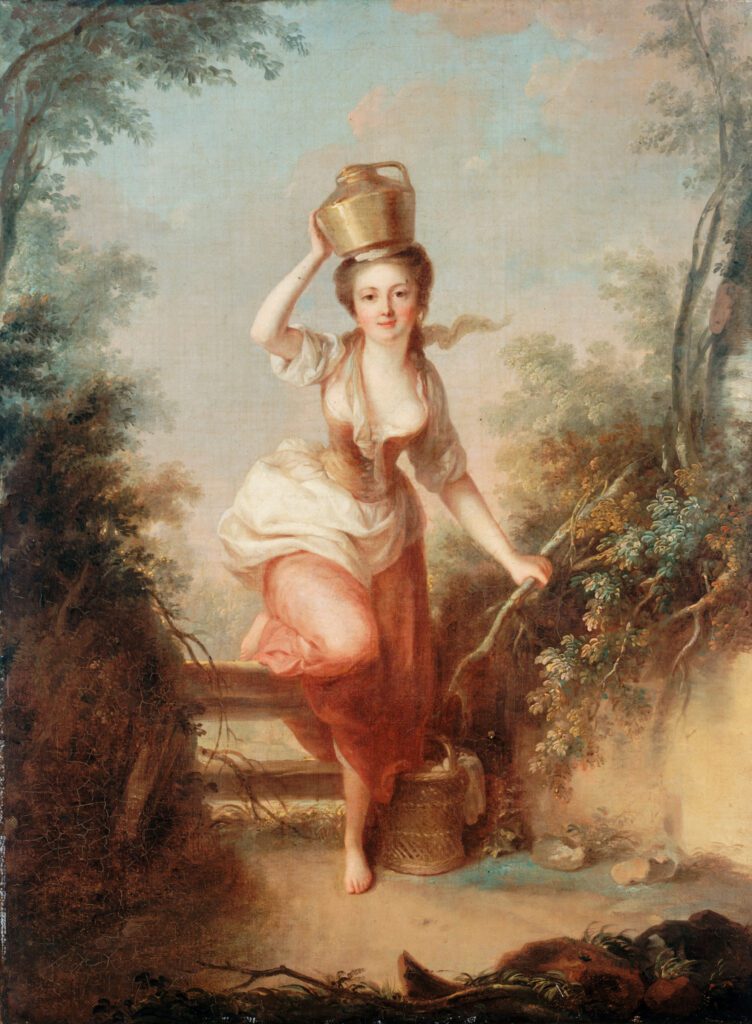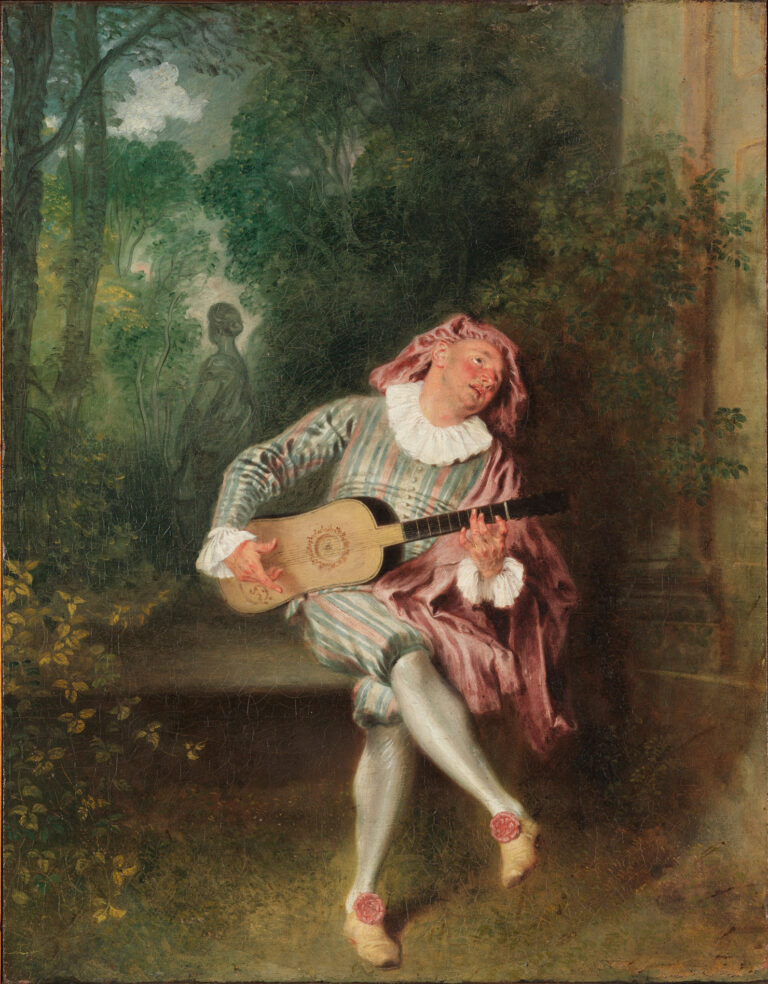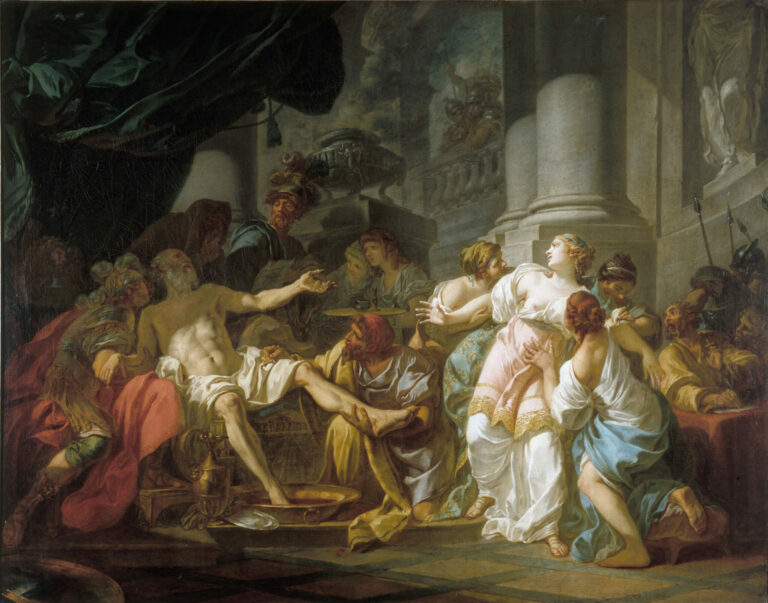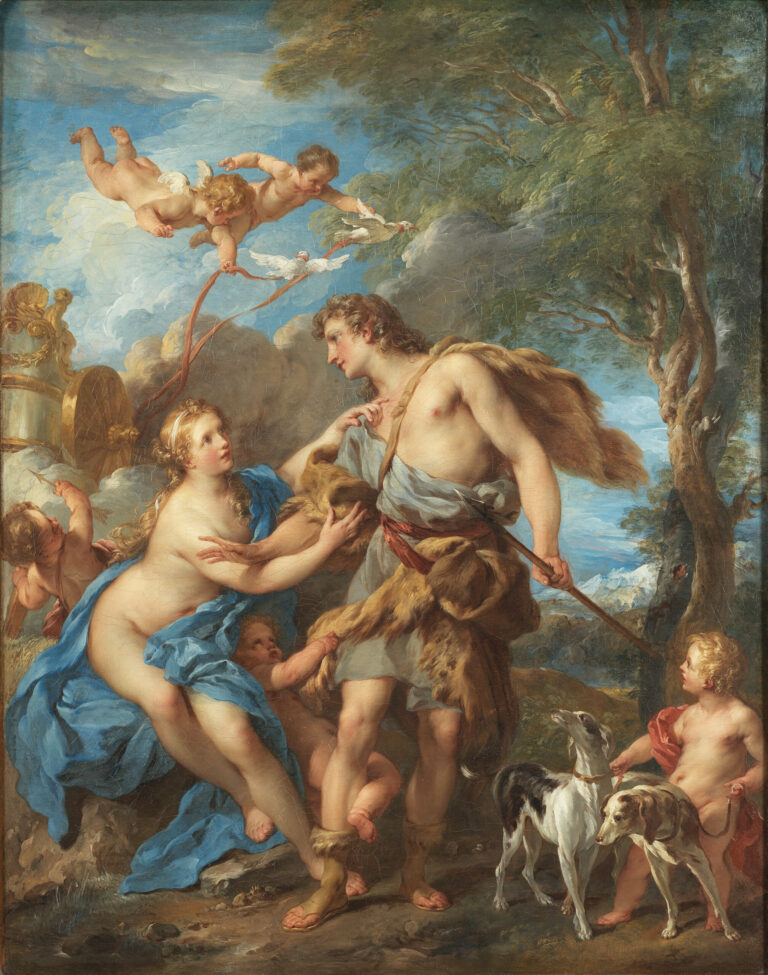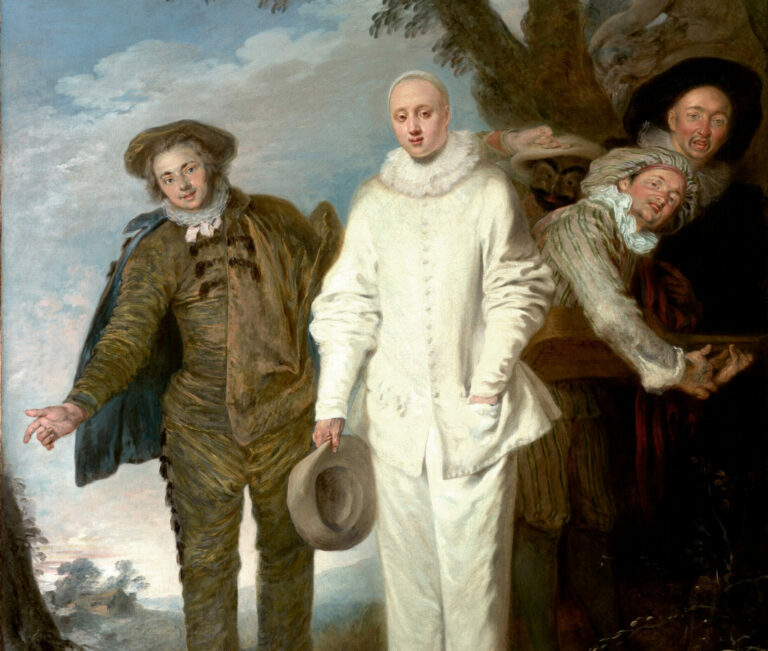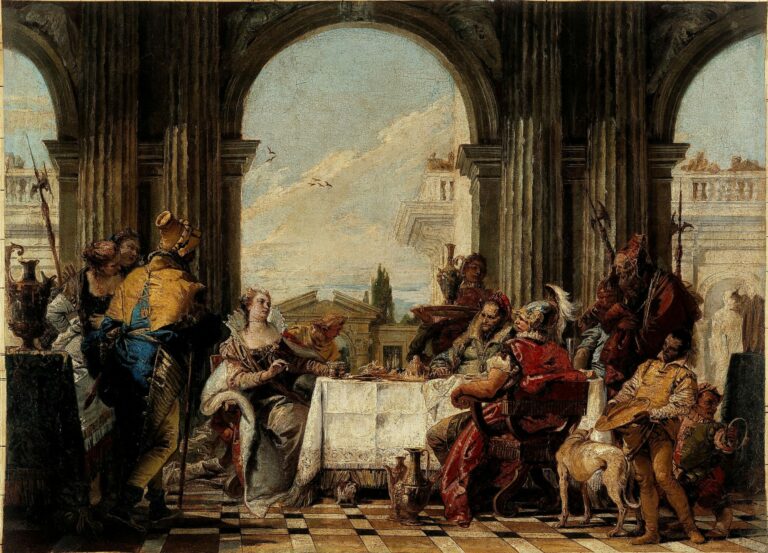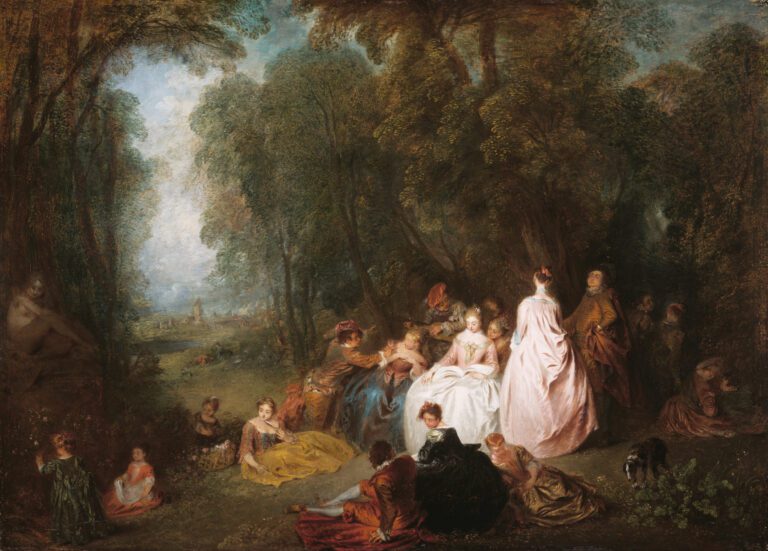“The Milkmaid” by Jean-Baptiste Huet the Elder transports us into an idealized bucolic universe, typical of 18th century France.
In this delicate composition, a young peasant woman with a pleasant face crosses a barrier, gracefully carrying a copper pot on her head. Her slender silhouette, dressed in a pinkish gown with a light bodice, stands out against a vaporous landscape of soft hues.
The artist captures with finesse this moment where the young woman, like a rural nymph, moves through a carefully arranged natural setting. The foliage frames the scene, creating an intimate atmosphere, while golden light bathes the whole in an almost mythological aura. This work perfectly embodies the period’s fascination with an idealized rural world, fantasized by the aristocracy, which would reach its pinnacle in Marie-Antoinette’s pastoral entertainments at the Petit Trianon. One can also recognize the influence of La Fontaine’s fables, particularly “The Milkmaid and the Pot of Milk,” conferring upon the canvas a narrative and moral dimension that is subtly suggested.
Further details:
- The Milkmaid, by Jean-Baptiste Huet the Elder, between 1750 and 1800
- 67.5 x 50.5 cm
- Paris Musées, Musée Cognacq-Jay, le goût du XVIIIe, displayed on Level 1, Room 1
- https://www.parismuseescollections.paris.fr/fr/musee-cognacq-jay/oeuvres/la-laitiere
Jean-Baptiste Huet known as the Elder (1745-1811) was a versatile artist of 18th century France, particularly renowned for his pastoral scenes and animal representations. Trained under his uncle Christophe Huet, then Jean-Baptiste Le Prince, he developed a graceful and refined style that charmed the high society of his time.
Made an Academician in 1769, Huet also worked as a designer for the Manufacture de Jouy, creating patterns for the famous “toiles de Jouy.” His work, imbued with sensitivity, is in perfect resonance with the bucolic aspirations of his era.

